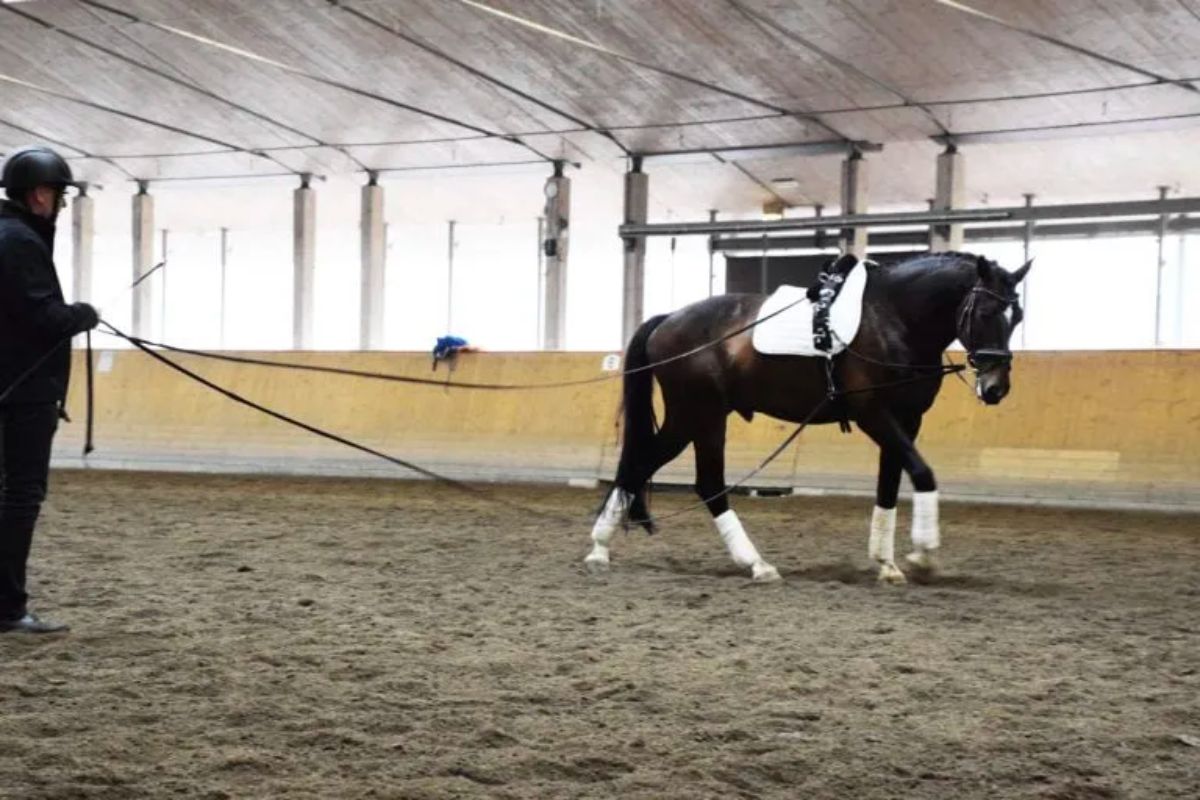Menu

Does it require training? How do you know if you're doing it right? And isn't it difficult to prevent the lines from tangling? It looks both easy and challenging when your instructor or someone you know from the stable stands in the middle and effortlessly drives the horse around the riding hall or riding track with a several-meter-long line in each hand.
The questions can be numerous when you play with the idea of starting it yourself. We will help you find the answers. Most importantly, all horses and all horse owners can learn to become familiar with the art of rein driving. It's all about being careful, patient, and understanding the technique behind it. This way, the lines can be used to teach the horse something new.
Training the horse with long lines is about working with it from the ground in a way that benefits riding it in the saddle. When training the horse in long lines, it's essential to do it as much as possible on its terms. Therefore, it's crucial to let it go deep and allow it to stretch as part of the warm-up – just as if you were sitting on it.

Training the horse in long lines has many names. Some call it "driving the horse," "rein driving it," or "riding it from the ground." In English, it's called "long lining." Regardless of the name, it's fundamentally the same; training the horse in long lines is about working with it from the ground in a way that benefits riding it in the saddle.
To enlighten you about the art of driving, we spoke in 2016 with Swedish Bo Jenä, one of the leading experts in training dressage horses from the ground. When we spoke to him, he had been working for 43 years at the national horse center Flyinge Küngsgaard. Here, he trained horses from the ground and educated other riders to understand ground training as an essential part of the horse's basic education. Today, Bo works as a team captain for the Swedish dressage national team, where ground training remains a focus, and he is also a four-star international dressage judge. We aim to help you understand and learn some of what he knows, so you can carefully try it with your horse.
"Horses like to work. They do their best, so we should too. Take small steps and build towards what you want, without pressuring the horse too much. The horse will do what you ask when it's ready and when it can."
Bo is clear when he says that training from the ground should precede training in the saddle, especially when introducing the horse to new exercises.
Bo Jenä's
Riding your horse from the ground is far more rewarding than one might think. There are three significant benefits:
Driving and lunging are far from the same. Even though you stand on the ground and have the horse move forward without any other aids except your legs, when you drive your horse, you do much more of the same as when you ride. This makes working with lines a much more sensitive and riding-technical discipline than lunging. According to Bo, one should either lunge or drive their horse once a week.

Training in long lines is especially useful when you want to teach your horse something new, and it also teaches you about your horse's way of functioning. Bo is clear in his statement, saying that ground training should precede saddle training, especially when the horse is introduced to new exercises.
"A skilled rider can handle most things from the back of a horse, but if, for example, it hasn't learned to use its hind legs and back, rein driving can be helpful. At Flyinge, we have always trained horses from the ground, and some actually learn to understand signals better when you stand next to them," Bo explains.
Tonny Jensen, who once bought and trained the World Championship-winning horse Marzog with Anne Grethe Tørnblad, shares this sentiment. The work in long lines helped teach Marzog everything a Grand Prix horse should know, ultimately making him one of the best horses of the century.
"A real riding master controls the horse with long lines and teaches the large animals about degrees of collection and fine passages. So, no one bothers the horse. Only in the second part of the training is the rider allowed to sit in the saddle – it's best that way," Tonny emphasized back then.
Bo, however, stresses that especially when it comes to the very collecting exercises, the horse needs space to find its balance and lift its back. And the rider also benefits from seeing what needs further work in the saddle.
"If you teach the horse piaff and passage with driving lines, you won't experience problems with transitions between two exercises, which otherwise cause problems for many. If the horse learns it through rein driving, it learns to work with its entire body," Bo concludes.